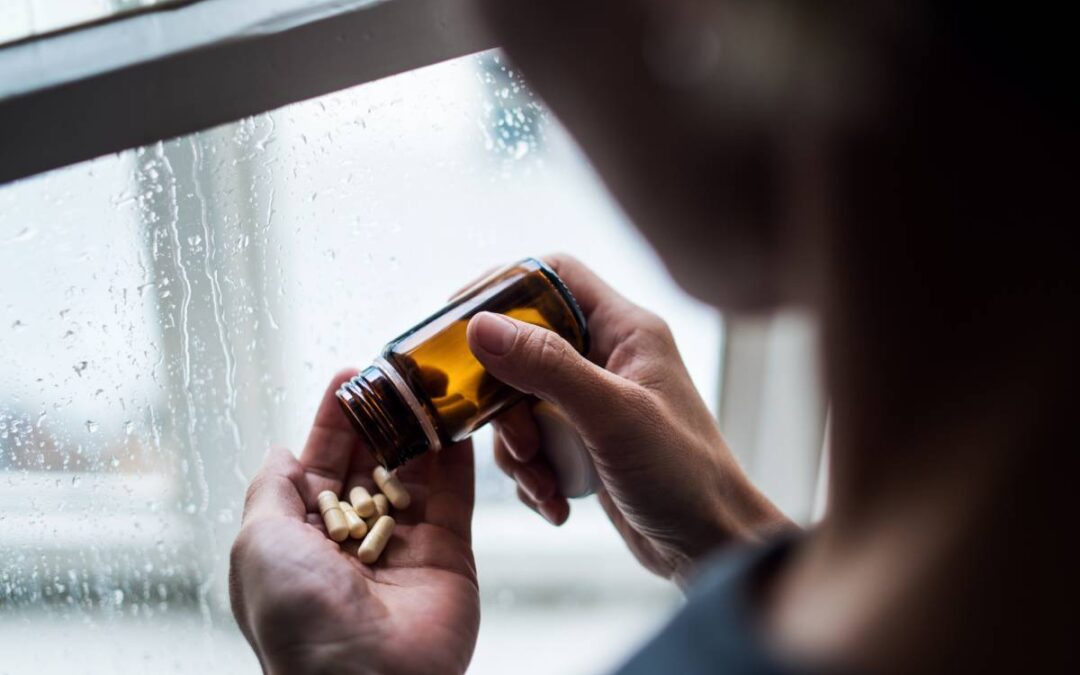Since the late 1990s, when healthcare providers began to freely prescribe opioids before the drugs were demonstrated to have a highly addictive nature, ubiquitous abuse and diversion of these medications have been continuously fueling the ongoing opioid epidemic (1). In 2017 alone, over 47,000 Americans died from an opioid overdose, including from prescription opioids, heroin, and the powerful synthetic opioid fentanyl (2). Currently, the Centers for Disease Control and Prevention (CDC) estimates the annual economic burden of prescription opioid abuse in the United States alone to be $78.5 billion, including costs from healthcare, lost productivity, addiction treatment, and criminal justice involvement (3). While drug overdose deaths had been steadily rising for nearly three decades, these dropped slightly in 2018, as Congress invested billions of dollars into treatment and prevention programs. In 2020, however, the COVID-19 pandemic has dramatically overshadowed and exacerbated the opioid crisis, and drug overdose deaths saw a large increase.
According to the CDC, 93,331 drug overdose deaths occurred in 2020, up from 70,980 in 2019. This rise was the largest year-to-year increase in half a century. Further, nearly 75% of fatal overdoses were attributed to opioids, increasing from 70% in 2019 largely due to the frequently illegally manufactured drug fentanyl. This trend can be linked to a few key, interrelated reasons.
First, local health departments that had been leading prevention and recovery efforts redirected their energies into testing for and tracing the coronavirus. Second, social service programs that relied on outreach and in-person visits were closed down, while inpatient treatment centers reduced their intake to ensure social distancing. Concurrently, manufacturing limitations have impacted the production of the important opioid blocking drug Narcan (4), while 20% of pharmacies in the United States reported that they do not fill prescriptions for buprenorphine, a key addiction treatment drug, partially due to COVID-19 disruptions (5). In the backdrop, psychosocial factors have exacerbated the conditions of individuals already struggling with or at risk of drug addiction, such as in the form of lost jobs, financial hardship, and isolation. Finally, the opioid crisis has garnered decreasing attention from political leaders and the general public given the all-consuming focus on COVID-19: “Addiction is a neglected disease,” according to the long-serving director of the National Institute on Drug Abuse, Nora Volkow (6).
In attempt to tackle this immense challenge, former West Virginia health commissioner Rahul Gupta has been nominated to lead the federal response to the crisis, galvanized by the data-driven approach he used to tackle drugs in West Virginia, one of hardest hit states. However, many researchers and officials believe that additional changes will need to be implemented in order to effectively curb the opioid crisis in the context of the current resource-limited and politically charged landscape. For example, certain obstacles to prescribing buprenorphine, such as in the form of Food and Drug Administration-mandated waivers, may need to removed, while financial resources from legal settlements against opioid manufacturers and stimulus spending may need to be invested into more comprehensive and robust mental health and substance use disorder treatment infrastructure.
The COVID-19 pandemic alongside the ongoing opioid epidemic has had devastating effects on individual well-being, chronic pain management, and our health care system, and multi-stakeholder efforts are urgently needed to preserve sustainable access to requisite prevention and treatment plans (7).
References
- Van Zee A. The promotion and marketing of oxycontin: Commercial triumph, public health tragedy. American Journal of Public Health. 2009.
- NVSS – National Vital Statistics System Homepage [Internet]. [cited 2021 Aug 9]. Available from: https://www.cdc.gov/nchs/nvss/index.htm
- Florence CS, Zhou C, Luo F, Xu L. The economic burden of prescription opioid overdose, abuse, and dependence in the United States, 2013. Med Care. 2016;
- Pfizer Hospital US [Internet]. [cited 2021 Aug 9]. Available from: https://www.pfizerhospitalus.com/products/naloxone-hydrochloride
- Kazerouni NJ, Irwin AN, Levander XA, Geddes J, Johnston K, Gostanian CJ, et al. Pharmacy-related buprenorphine access barriers: An audit of pharmacies in counties with a high opioid overdose burden. Drug Alcohol Depend. 2021 Jul 1;224:108729.
- Pandemic fueled deadliest year for drug overdoses, CDC data shows – POLITICO [Internet]. [cited 2021 Aug 9]. Available from: https://www.politico.com/news/2021/07/14/covid-pandemic-drug-overdoses-499613
- Manchikanti L, Vanaparthy R, Atluri S, Sachdeva H, Kaye AD, Hirsch JA. COVID-19 and the Opioid Epidemic: Two Public Health Emergencies That Intersect With Chronic Pain. Pain and Therapy. 2021.







Recent Comments